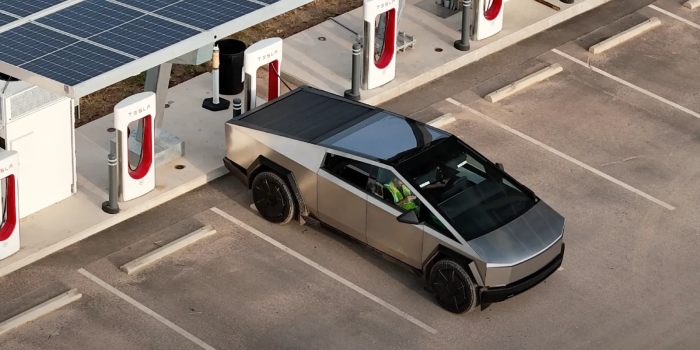The Tesla Cybertruck, equipped with groundbreaking 4680-format cells, has ignited curiosity since its release a month ago. Amid limited sightings on the roads, a burning question lingers: How does it fare in terms of charge rate? Unraveling this mystery unveils a charging experience that sparks discussions within the EV community.
Peak charging speed, a critical metric for electric vehicles (EVs), has become the focal point of discussions surrounding the Tesla Cybertruck. In EV statistics, charge rate, measured in kilowatts (kW), often surpasses the significance of range. The Cybertruck, Tesla’s pioneer with 4680-format cells, now faces scrutiny over its charging capabilities, particularly its charge curve.
While older EVs linger around 50kW, the contemporary standard hovers at 150kW+, with Tesla’s V3 superchargers delivering 250kW. The new V4s, however, boast an impressive 350kW. Charge curve, indicating how quickly a vehicle transitions from peak charge rate, adds another layer of complexity. A recent video from Our Cyber Life sheds light on the Cybertruck’s charge curve during a session at a V3 Supercharger in Mesa, Arizona.
The Cybertruck initiates charging at 14% state of charge (SOC), reaching a peak charge rate of 255kW but tapering rapidly. By 40% SOC, it descends to 150kW, further dropping to 100kW at 60% SOC, finally plateauing at 75-80kW from 66% to 90%. The entire session, from 14% to 90%, spans 50 minutes, injecting 94kWh into the 123kWh battery. Comparatively, the Model 3 Long Range outpaces the Cybertruck in peak and average C-rates.
Examining the Cybertruck’s performance in “miles of charge added per minute,” the Model 3 prevails, adding more range in less time. Notably, competitors like the Hyundai Ioniq 5 and Kia EV6 showcase superior charging curves, sustaining speeds of 170-180kW over a broader range. Even the Rivian R1T, a similar contender, slightly outperforms the Cybertruck.

However, factors like Cybertruck’s dual 800-volt and 400-volt charging capability, Supercharger station congestion and Tesla’s penchant for over-the-air updates contribute to a nuanced evaluation. The Cybertruck may potentially fare better at 800V chargers, and station dynamics during a busy period could have impacted the recorded charge curve.
This single test, conducted under specific circumstances, might not encapsulate the Cybertruck’s full charging potential. With Tesla’s track record of leveraging user data for updates, future improvements in charge rates could be on the horizon.
The Cybertruck’s charging dynamics, a subject of current scrutiny, might evolve with software updates and advancements in Tesla’s charging infrastructure.


